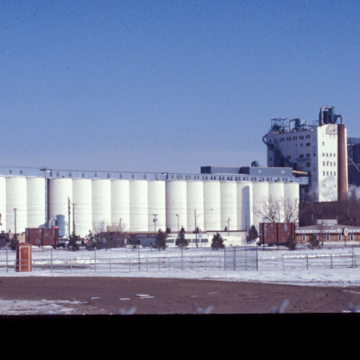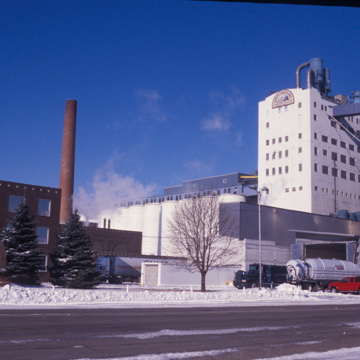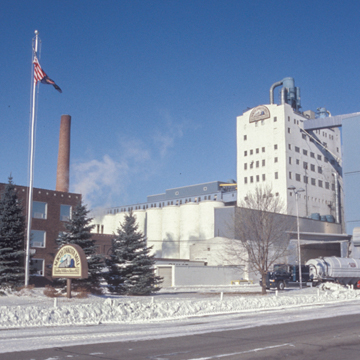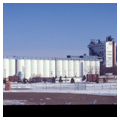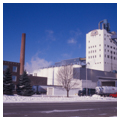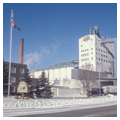North Dakota’s state-owned flour mill and elevator venture was one of the socialistic populist programs proposed by the Nonpartisan League (NPL), which rose to power in the elections of 1916. A state-owned mill would allow North Dakota’s farmers to gain economic independence from the Minnesota-based milling and railroad monopolies that controlled wheat grown in the state. In 1919 many towns and cities vied for the position of having the mill. In the end, Grand Forks was chosen because of its location on two rail lines, a national highway, and the Red River, which linked the city to European markets through Winnipeg. Overall, the mill has consistently provided three main benefits to the state—a stable market for wheat, often at better prices than other elevators; employment to the area, especially during the Great Depression; and revenue for the state budget, which is placed in the state’s general fund.
The Charles L. Pillsbury Company of Minneapolis and St. Paul (no association with the Pillsbury Milling Company there) engineered the complex. Construction of the mill was long delayed by opponents of the NPL, but the buildings were finally completed in 1922. Several buildings make up the historic portion of the complex. Most of these are connected by ground-level passages and automated grain delivery systems. The A-B Mill Building is an eight-story concrete structure, while the three-story administrative General Office Building and the Equipment Storage Building are functional in appearance with a simple pattern of white tile squares amidst horizontal and vertical brickwork, and the Power House has the same simple detailing. The twelve-story concrete Terminal Building was reputed to be the tallest building in the state until the new capitol in Bismarck (BL1.1) was built. The old flour warehouse adjoins the railroad tracks to allow for convenient loading of flour sacks onto the railcars. The wheat storage silos are cylindrical concrete structures built in 1922, the 1940s, and the 1960s.







